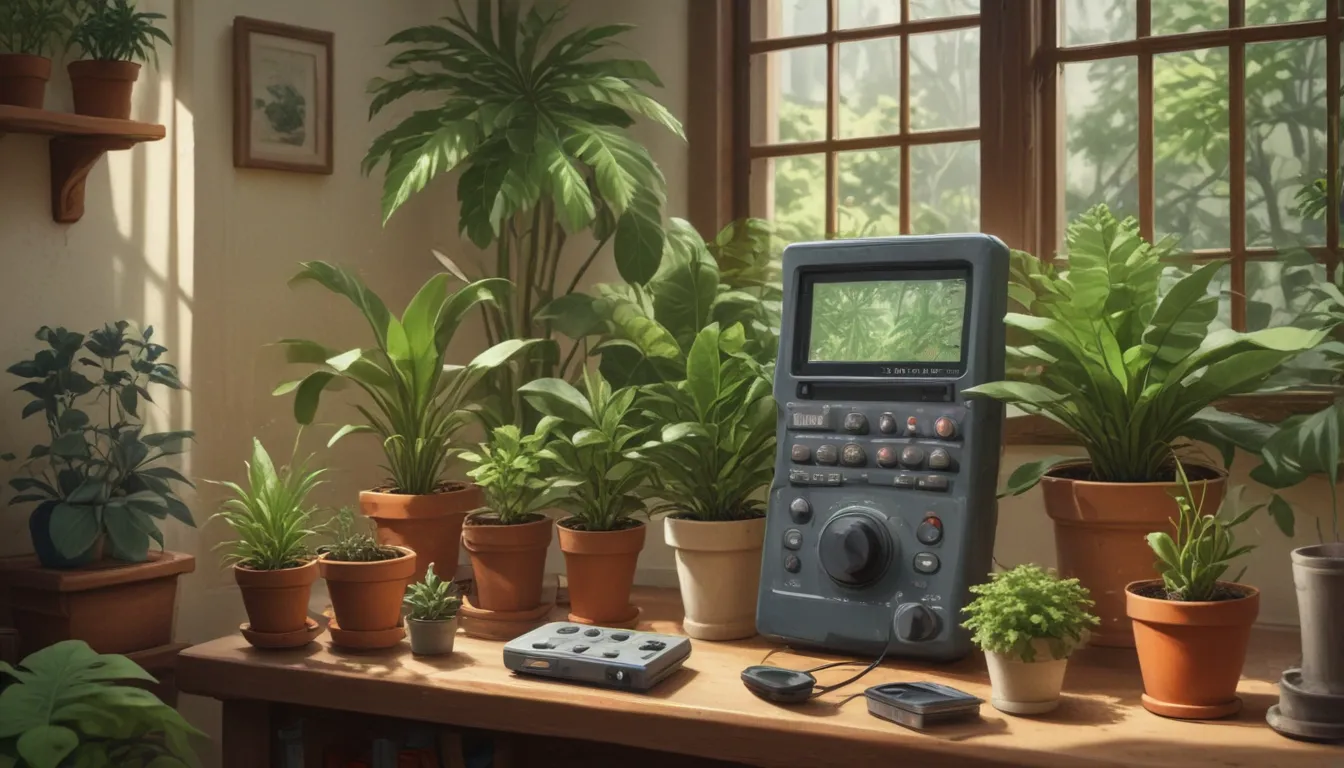How to Use a Light Meter to Keep Your Houseplants Happy and Healthy

Have you ever struggled to keep your houseplants thriving despite your best efforts? The key to solving this problem could be simpler than you think – with the help of a light meter!
This seemingly magical device can help you understand if your houseplants are receiving the right amount of light for optimal growth. Whether you’re just starting your indoor garden or already have a collection of plants, a light meter can provide valuable insights into the lighting conditions in your home.
In this article, we’ll delve into why you should consider using a light meter, how to choose the right one, the basics of using these gadgets, and how to interpret the results you gather. By the end, you’ll be equipped with practical knowledge to keep your houseplants healthy and thriving.
What You’ll Learn
- Why Use a Light Meter?
- Choosing a Light Meter
- How to Use a Light Meter to Care for Houseplants
- Interpreting Results
Why Use a Light Meter?
Plants rely on light for photosynthesis, their primary source of energy. However, the amount of light needed varies from plant to plant based on its natural habitat. While guidance for light exposure is often categorized as bright, medium, or low, there can be a significant disconnect between human perception of light levels and what plants actually experience.
Inaccurate light assessments can lead to unhealthy or struggling plants. Factors like seasonal changes, latitude, and window size can further complicate the issue. This is where a light meter comes in – providing objective measurements to help you ensure your houseplants receive adequate light for optimal growth.
Choosing a Light Meter
When selecting a light meter, you’ll encounter two main categories: analog and digital meters. Analog meters are basic and battery-free, while digital meters offer advanced features and multiple units of measurement. Lux and foot candle meters measure light as perceived by humans, while PAR meters focus on the photosynthetically active radiation essential for plant growth.
Lux and foot candle meters are budget-friendly and versatile for measuring natural sunlight. Foot candles are commonly used in public horticultural references, making them suitable for general indoor gardening needs. If you’re using LED grow lights or need precise readings for plant growth, consider investing in a PAR meter with photon measurement capabilities.
A recommended model for beginners is the Dr. Meter LX1330B Digital Illuminance Meter, which offers both lux and foot candle measurements for versatile indoor gardening applications.
How to Use a Light Meter to Care for Houseplants
Using a light meter is simple yet effective. After selecting the desired unit of measurement and range, position the sensor close to the plant foliage, pointing it towards the light source. Observe fluctuations in readings, record values, and analyze them over different days and weather conditions to understand your plant’s lighting needs accurately.
Utilize features like the hold button to freeze readings and the peak button to capture peak luminosity values. Regular monitoring and journaling can help you track lighting trends and make informed decisions about plant placement and supplemental lighting.
Interpreting Results
Interpreting light meter readings involves more than just capturing values. Experiment with different times and conditions to calculate averages and understand your plant’s unique lighting requirements. Consider recommended brightness ranges for different plant types based on foot candle values, ensuring optimal growth and overall well-being. Remember that plant cultivars may exhibit varying light sensitivities, necessitating customized care based on individual needs.
By incorporating light meter data into your indoor gardening routine, you can transform the health and happiness of your houseplants. Experiment with different lighting conditions, relocate plants as needed, and observe their response to optimize their growth. Share your experiences and insights in the comments – we’d love to hear about your journey to healthier houseplants.
In addition to using a light meter, explore other indoor gardening tools such as soil moisture meters and watering cans to enhance your plant care routine. By combining these tools and techniques, you can create a thriving indoor garden that brings beauty and joy to your home.
With the wave of a wand – or in this case, a light meter – you can unlock the secret to keeping your houseplants happy and healthy. Embrace the magic of light meters and watch your indoor garden flourish like never before!
Cheers to a greener, more vibrant indoor oasis with the help of a little light meter wizardry! 🌿✨
In this comprehensive guide, we’ve explored the significance of light meters for indoor gardening, provided tips on choosing the right meter, shared insights on using the device effectively, and offered guidance on interpreting results for optimized plant care. By embracing the power of light meters, you can become a plant care expert and create a flourishing indoor garden that dazzles with vitality and beauty. Let the light shine bright on your houseplants and usher in a new era of lush, happy greenery in your home! 🌞🌱





